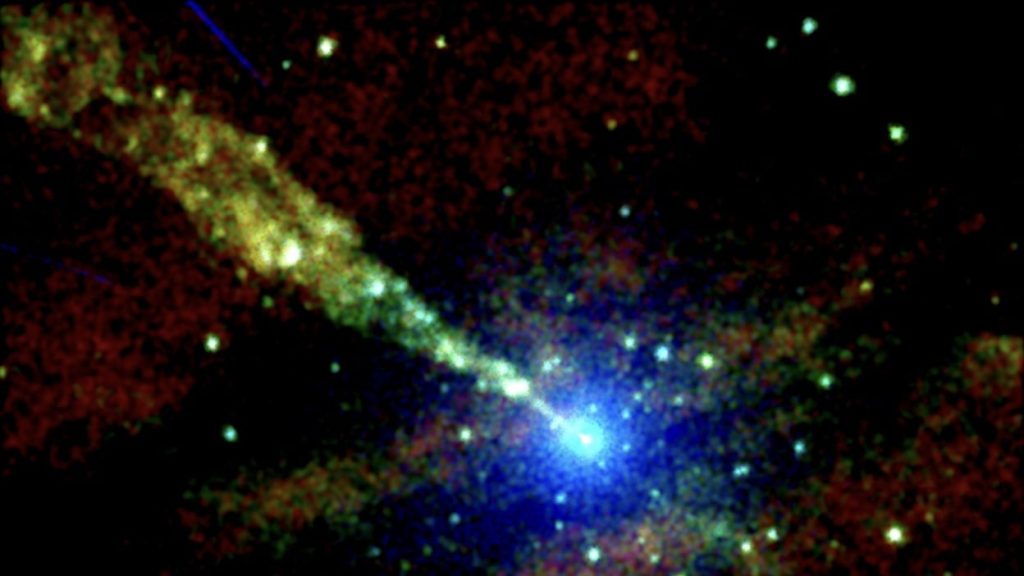Particles blasting from a supermassive black hole jet appear to be traveling at nearly the speed of light — much faster than scientists had previously clocked them, according to new research.
While most observations of black holes in space are with radio telescopes, a research team used NASA‘s Chandra X-ray Observatory to study their jets in a new light — literally. What they found with the X-ray telescope was surprising.
“We’ve shown a new approach to studying jets, and I think there’s a lot of interesting work to be done,” said David Bogensberger, lead author of the study, in a statement.

Credit: ESO / WFI / MPIfR / ESO / APEX / A.Weiss et al. / NASA / CXC / CfA /R.Kraft et al.
Black holes were little more than a theory 50 years ago — a kooky mathematical solution to a physics problem — and even astronomers at the top of their field weren’t entirely convinced they existed.
Today, not only are supermassive black holes accepted science, they’re getting their pictures taken by a collection of enormous, synced-up radio dishes on Earth. Supermassive black holes, millions to billions of times more massive than the sun, are thought to lurk at the center of virtually all large galaxies.
What we know is this: Falling into a black hole is an automatic death sentence. Any cosmic stuff that wanders too close reaches a point of no return. But scientists have observed something weird at the edge of black holes’ accretion disks, the ring of rapidly spinning material around the hole, like the swirl of water around a bathtub drain: A tiny amount of that stuff can suddenly get rerouted.
When that happens, high-energy particles can get flung outward as a pair of jets, blasting in opposite directions, though astronomers haven’t figured out exactly how they work. Jets give out prominent radio emissions, but have also been observed to be surprisingly bright in X-rays, too.
Credit: NASA’s Marshall Space Flight Center illustration
So Bogensberger, a postdoctoral fellow at the University of Michigan, decided to look at the black hole at the center of Centaurus A, one of the brightest galaxies in the sky, about 12 million light-years from Earth, in X-rays. For reference, one light-year is nearly 6 trillion miles.
Using data already captured by the space observatory between 2000 and 2022, Bogensberger developed a computer algorithm to track bright lumps within the jets that astronomers call knots. Following knots during a set timeframe is a way to measure the speed.
After tracking one knot in particular, the team found it traveling at least 94 percent the speed of light. That was significantly faster than what scientists had seen in radio waves, with a knot from the same black hole jet, moving at 80 percent the speed of light. The paper has been published in The Astrophysical Journal.
Not only did the team discover faster clumps in the X-ray band, but the data also showed that the fastest knots weren’t the ones closest to the black hole, as was seen in radio waves. Instead, the fastest knots were those around the mid-region of the jets.
What does all of that mean? The answer is a big shrug emoji right now, but Bogensberger intends to use his method to collect more data observing the jets of other supermassive black holes.
“A key to understanding what’s going on in the jet could be understanding how different wavelength bands trace different parts of the environment,” he said. “Now we have that possibility.”
Topics
NASA

